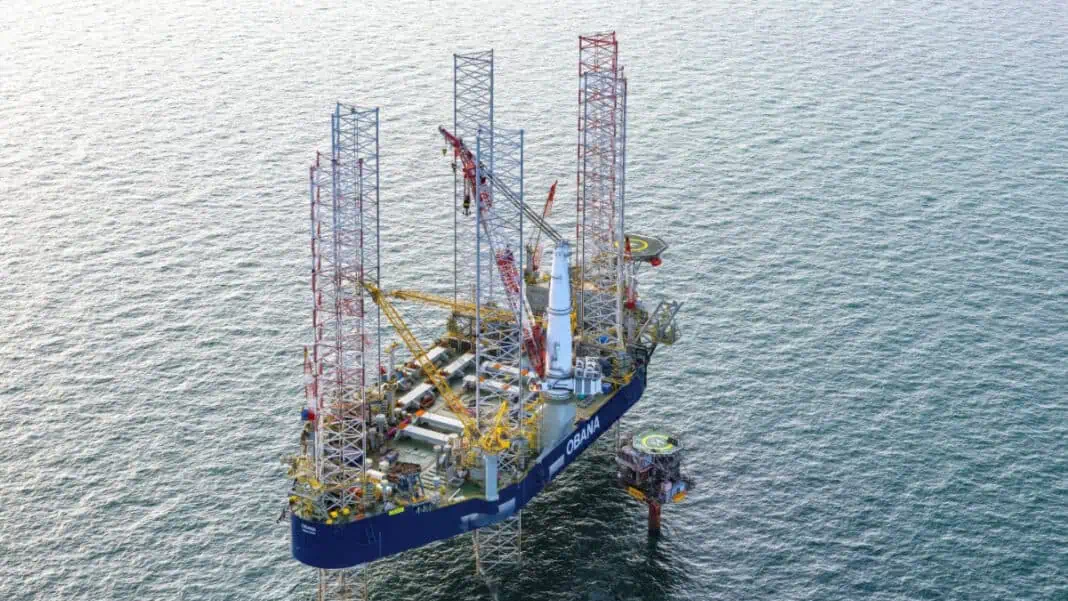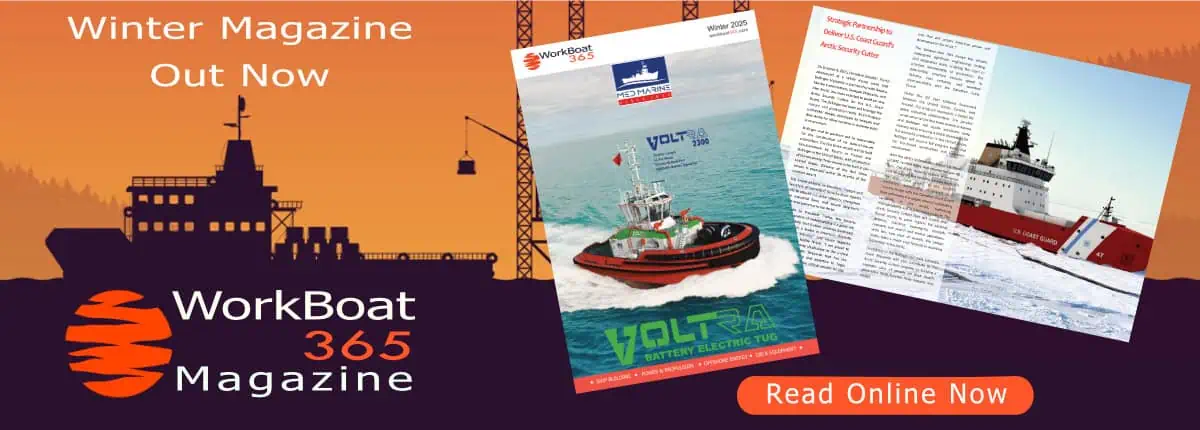Perenco UK announce that Petrodec’s new heavy lift jack-up vessel, Obana, has officially commenced decommissioning work in the Southern North Sea.
The vessel’s first assignment is on Block 48/12a, where it is undertaking the safe removal of the Galahad platform’s topside and jacket. Following completion of the Galahad campaign, Obana will mobilise to the Amethyst field to remove the C1D, A2D, and B1D jackets. These structures are expected to be fully decommissioned and offloaded in The Netherlands later this year.
Obana is the world’s largest self-elevating, heavy lift jack-up vessel of its type. Following the completion of final trials, including its first offshore full platform lift, Obana has now started its commercial operations with Perenco UK, before moving onto contracts with other operators.
Recently completed at the Damen Shipyard in Rotterdam, the six-legged Obana comprises 85% recycled steel and was engineered by merging two repurposed former drilling rigs, the Brage and Gabrus, with a newbuilt mid-section which was constructed in Dubai. Obana was built specifically to address complex and heavy decommissioning offshore work, in water depths of up to 65 meters. It is equipped with a 2,000-tonne crane and has 3,800m² and up to 12,000 tonnes of deck capacity equipped with roller systems capable of rearranging components on deck, so that multiple modules can be removed in a single campaign. The design was a collaboration between Petrodec, Dixstone’s specialist decommissioning arm, and Singapore-based Seatrium Offshore Technology.
Perenco UK Southern North Sea Managing Director, Jo White, said:“The deployment of the state-of-the-art Petrodec Obana heavy lift jack-up vessel to Galahad, and then to Amethyst, are further milestones in our ongoing decommissioning programme. Having already dismantled 26 offshore structures, we are committed to continuing our track record of effective and efficient decommissioning, exercising diligent stewardship of one of the largest networks of owned and operated gas assets in the UK North Sea.”












